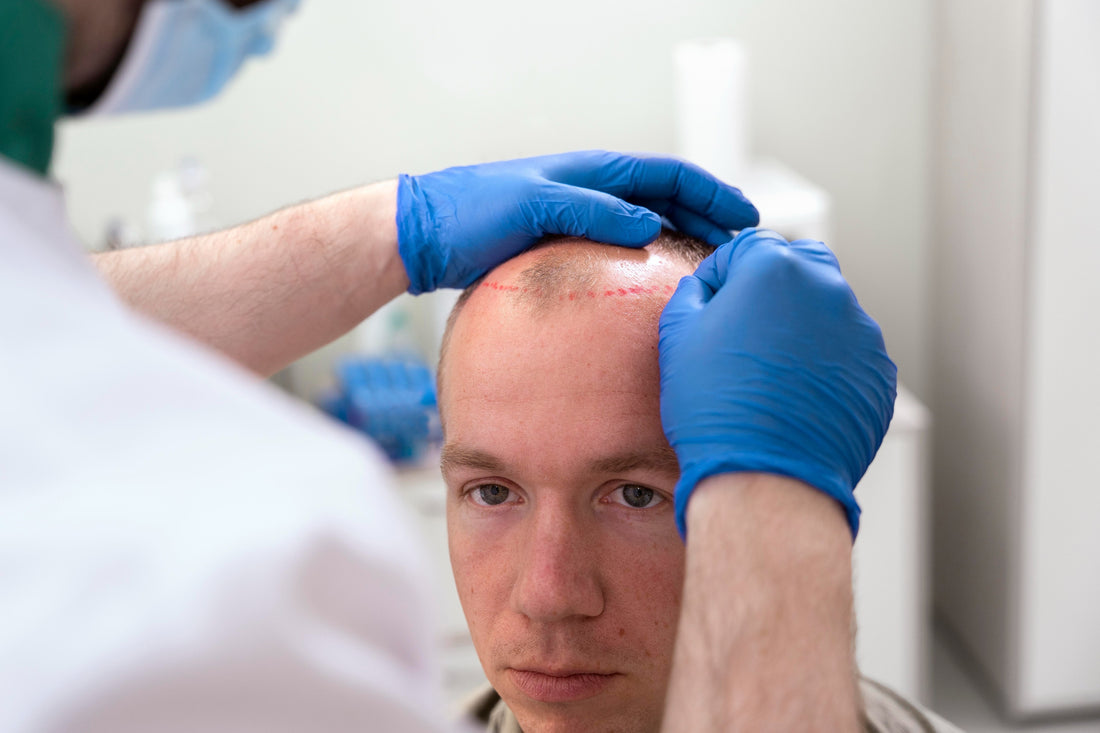
The Ultimate Guide to Androgenetic Alopecia Treatments
Androgenetic alopecia is a frequent kind of hair loss that is characterized by a gradual thinning of the hair, usually at the top of the scalp. It is sometimes referred to as female pattern hair loss or male pattern baldness.
We'll explore the definition of androgenetic alopecia, its symptoms and indicators, underlying causes, and available viable treatments in this thorough guide. Learn more about Berkowits' top hair loss remedies for men and women.
What is Androgenetic Alopecia
When the dynamics of the hair cycle are altered, the terminal hair follicle undergoes vellus transformation, which causes progressive shrinkage of the hair follicles in androgenetic alopecia (AGA). An active growth phase (anagen) that lasts anywhere from two to seven years is a feature of the typical hair cycle. The next phase is called telogen, which lasts from five to six weeks to roughly 100 days, and is followed by a brief regression stage called catagenesis, which lasts one to two weeks. Apoptosis bursts occur in most follicular keratinocytes during the catagen phase, which is an evolutionary process that also sees the condensation of dermal papillae and the cessation of pigment synthesis. The dermal papillae shift upward as a result. The hair shaft develops into a club-shaped (vellus) hair during the telogen phase. Eventually, combing and washing cause the hair to shed, resuming the anagen phase.
The length of the telogen phase rises while the anagen phase eventually diminishes in AGA. The maximum length of each new anagen hair is less than that of its predecessor due to the duration of the anagen phase, which eventually results in shrinkage and a bald appearance.
The Symptoms and Signs
- Slow Hair Loss: Androgenetic alopecia frequently shows up as a slow loss of hair, starting in the women's crown and the men's temples. This increasing thinning, which affects both men and women, is a typical early indication of the illness.
- Receding Hairline: Men often notice a receding hairline, which is typified by hair that falls backward and forms a prominent "M" shape at the forehead and temples. For men, androgenetic alopecia is typically indicated by a receding pattern.
- Hair Loss at the Crown: Visible thinning or bald patches may arise from hair loss in both men and women at the crown of the head. One of the main characteristics of androgenetic alopecia is the decrease of hair density in the head area.
- Increased Shedding: People who suffer from androgenetic alopecia frequently observe an increase in hair loss, particularly when washing or combing their hair. This is a common symptom of excessive shedding, which can add to general hair thinning.
- Reduced Hair Density: As androgenetic alopecia advances, there may be a drop in total hair density, giving the hair a less voluminous appearance. The condition's continual hair thinning and loss is the cause of this decrease in hair density.
What causes Androgenetic Alopecia
After learning more about androgenetic alopecia and its typical symptoms, let's examine the role that biology plays in this condition. The occurrence and severity of androgenetic alopecia can be influenced by a multitude of environmental and genetic factors, but ultimately, your unique genetic makeup and family history play a major role.
Studies have shown that the majority of the consequences of genetic hair loss are caused by a class of hormone known as androgens. Dihydrotestosterone, or DHT, is the primary androgen, and people who suffer from androgenetic alopecia are genetically predisposed to being sensitive to its effects.
This is how DHT functions. It's a hormone that, in moderation, supports men's general development and health, particularly throughout puberty. It comes from testosterone, the male sex hormone. On the other hand, very high DHT levels might result in hair loss. More DHT in the bloodstream has the ability to attach itself to receptors on your scalp's hair follicles, which causes them to shrink. As a result of this shrinkage, your scalp becomes less able to sustain and grow a full, healthy head of hair.
Berkowits: The Best Hair Loss Treatment for men and Women
The confidence and sense of self-worth of an individual can be greatly affected by androgenetic alopecia. Nonetheless, there are efficient therapies available to support hair regrowth and manage androgenetic alopecia. The best hair loss treatment for female, including cutting-edge therapies, customized treatment programs, and professional advice from qualified trichologists, are available at Berkowits.
Berkowits offers complete solutions that are customized to meet your specific needs, whether you're looking for the greatest hair loss treatment for men. You will receive the best care and can expect the best outcomes because of our dedication to excellence and innovation. Make an appointment with Berkowits right now to begin the process of getting your full, healthy head of hair back.

